Old 60s Cars
Old-school muscle cars — who doesn't like them? But if you could have one American muscle car of your choice right now, but only one, what would it be? With all the classic cars out there, we understand that it would be hard to choose just one. From the obvious American muscle car staples to the lesser-known hot rods of the day, these muscle cars definitely confirm that there's no school like the old school.
18 Old-School Muscle Cars That Defined An Era
With many great choices on the market today, we're counting down 18 of the best old-school muscle cars ever built. And there's not a Chevrolet Corvette in sight! If you've got good taste, we're sure you'll find at least a few of your favorite old-school cars on this list.
1970 Chevrolet Chevelle SS 454

The early '70s is often considered the apex of the muscle-car era, and we offer up the 1970 Chevrolet Chevelle as proof. Chevrolet offered two versions of the Chevelle — the LS5 and LS6. While the LS5 version made 360 hp, the LS6, with its Holley 4-barrel carburetor, was bumped up to an impressive 450 hp.
No other muscle car was able to equal the horsepower of SS 454 at the time of its production. For hot rod enthusiasts who lusted after horsepower, the Chevelle SS 454 was indisputably one of the best muscle cars of the '70s.
The Chevelle SS 454 was able to beat nearly every competitor — and it looked terrific doing it. This old-school Chevy muscle car is an ideal combination of power, stylish good looks, and comfort. If you want a car that you can hammer down the road late at night or cruise down Main Street in style, this is the classic car you're looking for.
1970 Plymouth Hemi Barracuda
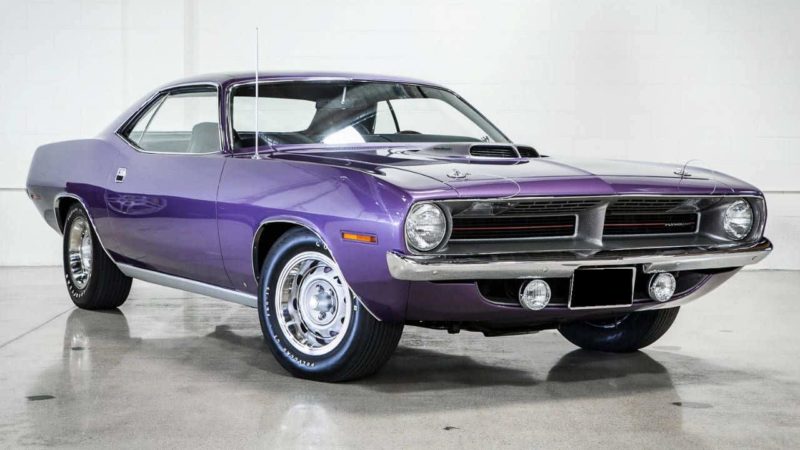
In 1970, Plymouth finally split from Valiant and created their own design. The result was one of the coolest muscle cars — the iconic Barracuda. Over the years, Plymouth opted for a variety of 6 and 8 cylinder engines to power this classic car, but one, in particular, stands out. The 1970 Barracuda was powered by a dual-carburetor, 426 cubic inch Hemi that could easily whip out an astonishing 425 hp.
With its drag racing heritage, the 1970 Hemi 'Cuda was able to toe the line with some of the best muscle cars of the '70s. The car even had a special suspension setup specifically crafted for heavy accelerations and a unique split-channel air intake mounted atop the hood.
Unfortunately, Plymouth produced a very limited number of Hemi 'Cudas which means that to pick one up on the modern market, you'll need deep pockets to add one of these old-school muscle cars to your stable.
1969 Dodge Charger

The 1969 Dodge Charger is the epitome of a true American muscle car. The '69 Charger was offered in various models from the base SE (Special Edition), which offered a few more luxuries to the R/T version with improved performance. And then there were two race models — the 500 and Daytona.
The Charger also boasted a selection of engines that started with Chrysler's Slant Six and five different V8 engines with the top-end "Street Hemi," which bumped the Charger up to a respectable 425 hp.
Across all models, the only thing that remained the same was the Charger's distinctive body style — a two-door hardtop restyled from the 1968 model. The SE and R/T Chargers got a few additional style updates, such as a vertical center divider in the front grille and horizontal taillights.
Fun Fact: The Dodge Charger Daytona was specifically designed for aerodynamic tests with NASCAR. The results were amazing, with the Daytona being the first car to break 200 mph in NASCAR. However, the NASCAR rulebook soon changed, and the Daytona was (unfortunately) banned.
Compared to a standard Charger, the aerodynamic modifications on the Daytona lowered its coefficient of drag to 0.28, which was quite impressive even by the current standards. You might be wondering if this massive rear wing was necessary for downforce. Turns out, not really. Legend has it that the wing was made with an exaggerated height so the trunk lid could open and close underneath it.
1969 Ford Mustang Boss 429
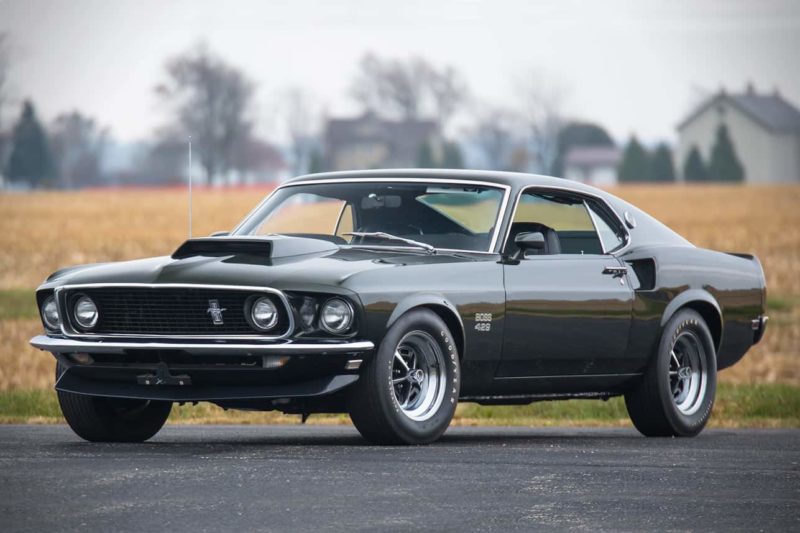
The 1969 Ford Mustang Boss 429 is an American muscle car specifically made to meet NASCAR regulations. Thanks to this exclusivity, only about 1,400 Boss 429 cars were manufactured, making it one of the rarest 1969 muscle cars.
What is so special about the 1969 Ford Mustang Boss 429 is that it was completely hand-built. At the time, the Ford Mustang, though young, already had a great reputation, and the Boss 429 was a real beast made especially for racing, although it sadly never got to compete in NASCAR.
It featured a huge 429 cubic inch V8 engine which delivered "only" 375 hp. However, it was made to be revved up to 6,000 rpm. Mustang had to go through numerous modifications to fit the engine inside the car.
The only problem was that the motor didn't perform as well as other Mustang engines on the street. It was a bit slower than other big-block Mustangs in '69. Despite these setbacks in power, the necessary modifications helped Mustang achieve even better looks and design with the Boss 429, such as the hood scoop and trunk-molded spoiler.
Fun Fact: Between 1969 and 1970, the Boss 429 was fitted with three different engines. The first was the S-Code, followed by the T-Code, which had lighter parts, and finally, the A-Code which came with the last cars in the 429 line.
1969 Pontiac GTO "The Judge"

Pontiac pretty much owned the muscle car scene in the '60s. Their 1964 Pontiac GTO was one of the first proper American muscle cars. But by 1968, Pontiac had a huge amount of competition and needed something better.
Even though Pontiac originally wanted to create a cheaper GTO with a smaller engine, they created a larger GTO. The Pontiac GTO Judge came standard with a Ram Air III, 360 hp engine, and offered an even more powerful engine for buyers who wanted more ponies. The hardcore Ram Air IV was good for 370 hp.
Pontiac even produced a convertible version of the Ram Air IV GTO Judge in 1969. However, only five of them were made, making them one of the rarest convertible American muscle cars of all time.
The 1969 Pontiac GTO Judge had a specific body design that most commonly came in a you-can't-miss-it orange. It had a good-looking trunk-mounted wing and featured the iconic split air intakes on the hood, which persisted even to the latest iteration of the GTO.
Fun Fact: The Judge was so popular that the lead singer of the rock band Paul Revere and the Raiders wrote a song about it. In fact, the first TV commercial for the car featured the band singing about the car. It is one of the first rock music videos made.
1969 Chevrolet Camaro ZL1

Not many people know that today's Chevrolet Camaro ZL1 is named after the 1969 Camaro ZL1. It's one of many legendary American muscle cars made by Chevrolet. The '69 Chevy Camaro ZL1 had the most powerful engine Chevy ever offered to the public.
The ZL1 came outfitted with the manufacturer's well-known 427 V8. However, instead of having an iron block, the '69 Chevy Camaro Zl1 was the first car to feature a lighter-weight aluminum engine block. That didn't slow down this Chevy Camaro, as the ZL1 had the 427's regular output of 430 hp, though independent testing has revealed that the output was actually much higher.
It's almost laughable now to find out that the 1969 Camaro ZL1's initial price was only $7,200 in 1969. Today, you'll definitely need to spend a good bit more, especially because the 1969 Camaro ZL1 was one of the rarest production cars ever made by Chevrolet.
Fun Fact: The all-aluminum ZL1 V8, made according to COPO 9560 order, is an engine made for racing. Chevy developed the engine originally for the Chaparral team to use in the Can-Am series. You won't be able to tell the difference from outside, as the ZL1 has no specific emblems, just the usual Camaro badge.
1970 Buick GSX
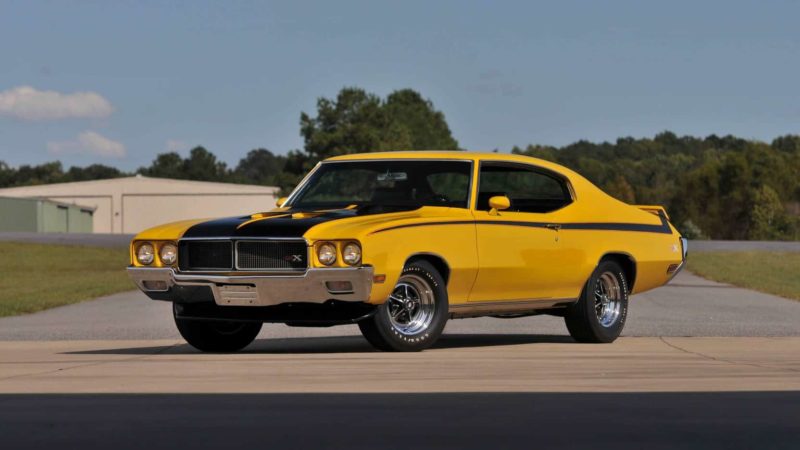
When Buick first appeared on the American muscle car scene, it was one of the most luxurious brands available and one of the most powerful. With the introduction of the GSX, the difference between the appearance of the traditional Buick and the new GSX was huge.
The freshly designed Skylark body style was meant to attract more sales and become an icon of '70s muscle cars. Although the sales started slow, they later improved. The GSX boasted a rear spoiler, body striping, and other visual improvements.
Only 687 GSXs were built, and a surprising 488 of them were ordered with a Stage 1 upgrade. The 1970 Buick GSX was powered by a 455 cubic inch V8 engine that could produce a surprising 510 lb.-ft. of torque. Customers who ordered the Stage 1 upgrade made do with 360 hp to the rear wheels.
Although the 1970 Buick GSX wasn't one of the quickest or the most powerful muscle cars at the time, it's definitely one of the more unique and luxurious vintage cars from the era.
1970 Dodge Challenger
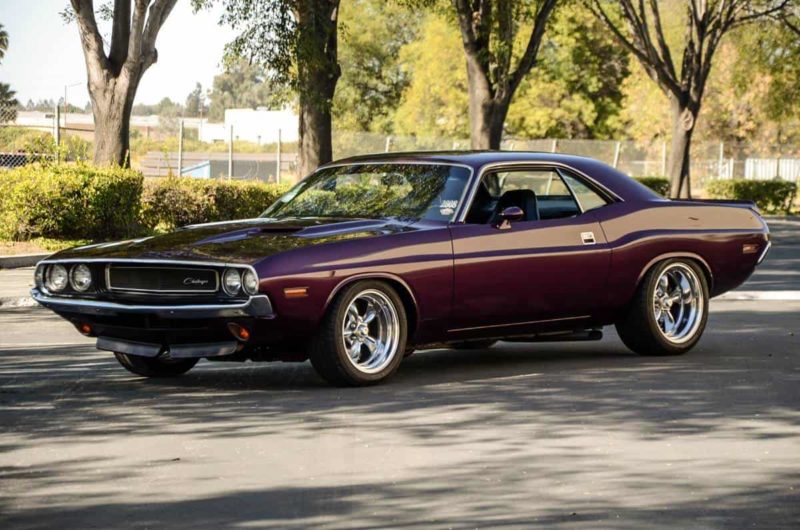
The 1970 Dodge Challenger was actually based on the Plymouth Barracuda platform; however, the Challenger is a bit larger than Barracuda. The wheelbase was stretched by two inches to make more space in the interior.
The 1970 Dodge Challenger had a longer wheelbase, larger dimensions, and a luxurious interior. It was meant to be a bigger, more luxurious, and higher-priced muscle car in response to earlier muscle cars such as the successful yet simple Ford Mustang.
The Challenger was available with several trim and option levels with luxuries such as air conditioning and a rear window defogger. Also, it could be outfitted with any Chrysler engine in their inventory. The most interesting model available was definitely the 1970 Dodge Challenger R/T which featured a 426 cubic inch engine.
1968 Plymouth Hemi Road Runner

Like other muscle car manufacturers of the era, Plymouth was focused on creating the rebel machine that was a true muscle car fighter. Fortunately, Plymouth achieved what they were aiming for because the Plymouth Hemi Road Runner really did become one of the greatest performance muscle cars of all time.
It featured a 425 hp, 426 cubic inch Hemi V8 engine, and it quickly became the number one muscle car for drag racing. The car was wildly popular, and while Plymouth expected to sell about 20,000 Hemi Road Runner's, they pushed about 40,000 cars.
Even before introducing the 1968 Hemi Road Runner to the crowd, Plymouth licensed the Road Runner name from Warner Brothers — known for their roadrunner cartoon character. One of the best tricks the Road Runner had up its sleeve was that it looked just like a regular family car. That is until you hammered down the accelerator and let the V8 under the hood out to play.
1969 Mercury Cougar Eliminator
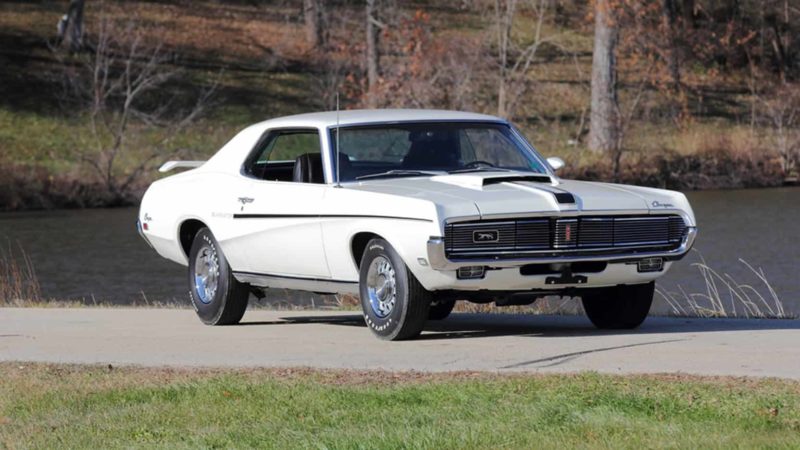
When Mercury tried to raise their muscle car profile, they finally break into the muscle-car world with the 1969 Cougar Eliminator. This car came with only two engines: a 302 cubic inch small block and a 428 cubic inch Cobra Jet. The Cobra Jet produced 355 hp and an amazing 440 lb.-ft. of torque. It wasn't uncommon for drivers unimpressed by those numbers to install upgraded headers or dual-quad carburetors to up the ante.
In terms of styling, the only thing that really differed between the Eliminator and the Mustang was the hood. The Eliminator didn't use the shaker hood, yet its standard scoop was functional only with the Ram Air upgrade. The Eliminator was only offered in four colors – yellow, white, bright blue, and competition orange.
On the outside, the front grille, side stripe, and spoilers did a lot to help the Eliminator appear more muscular. Needless to say, the looks really did go over well, especially with all the power it offered.
1970 Oldsmobile 442
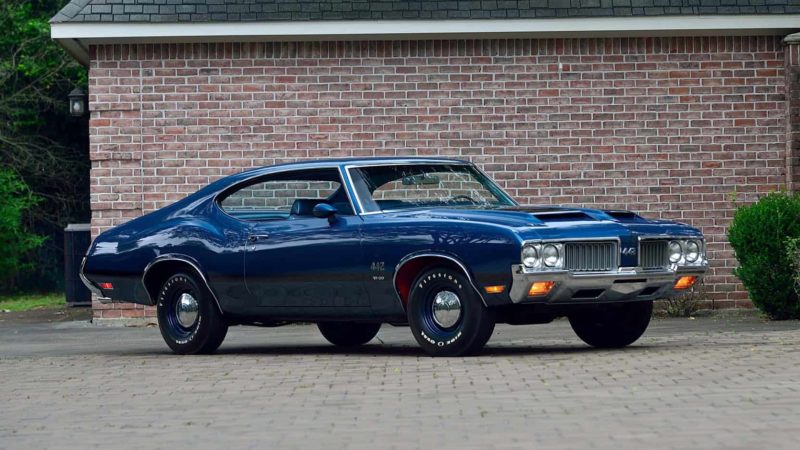
When General Motors decided to eliminate their engine size cap, the Oldsmobile 442 was born with the best performance so far. The 1970 Oldsmobile 442 was considered a king of performance. Wondering why?
The standard engine that came with Oldsmobile 442 was 445 CID V8, and although General Motors claimed that the output was 365 hp, the actual output was about 400 hp accompanied by a raucous 500 lb.-ft. torque.
The reason behind that was to make sure that the actual customers don't get penalized by insurance companies. General Motors wasn't the only company to use such a trick. It might have been a smart move back then, but it wouldn't hold up in modern times.
A W-Machine version of the 442 featured a fiberglass hood, functional air scoops, a low-restriction air cleaner, aluminum intake manifold, cylinder heads, carburetor, distributor and special camshaft. However, the W-Machine version was a bit more expensive but worth it, by all accounts. It was an ultimate performance package for the most enthusiastic sports car lovers.
Fun Fact: James Garner, the famous actor, took a 1970 Olds 442 to the NORRA Mexico 1000 race, which later became the Baja 1000, and won second place. Vic Hickey, the renowned Baja-race car guru, built the car (named the "Goodyear Grabber") under the sponsorship of Goodyear tires. The car has since been restored and put up for auction.
1970 Ford Torino Cobra
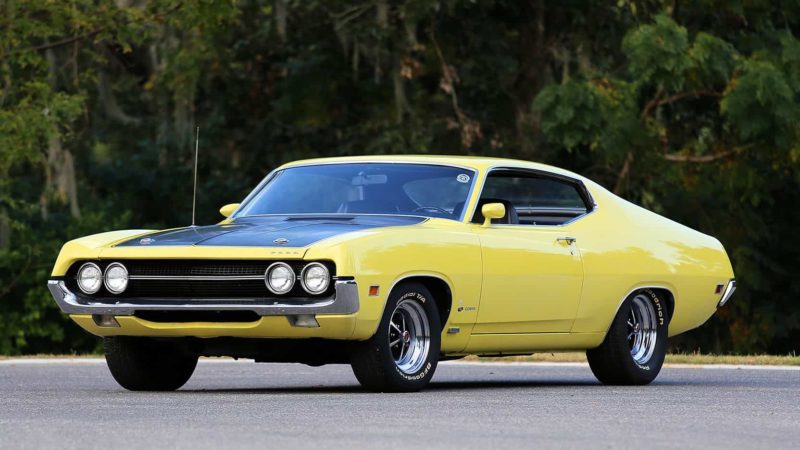
The Ford Torino had many different models, but the one that remains one of the fan favorites for many muscle car enthusiasts is definitely the Cobra. It's a pure performance model of the Ford Torino that was awarded Motor Trend's car of the year in 1970.
The SportsRoof was the only model available for the Torino Cobra, and it came with competition suspension, a close-ratio transmission, exposed hood latches, and Cobra emblems. The additional features available for the 1970 Ford Torino Cobra were 15-inch Magnum wheels and black sports slats made for the rear window.
The 1970 Ford Torino Cobra made 370 hp with the help of a 429 V8 engine. This model was slightly heavier than other Torino models but still performed better thanks to the additional power. This beauty was available in a three- or four-speed manual transmission or with a three-speed automatic gearbox.
The 1970 Ford Torino Cobra reached 60 mph in only 5.8 seconds and could run a quarter-mile at 100 mph in just 14.5 seconds. Though it didn't clam the quickest performance of the '70s, it was pretty darn respectable and competitive to boot.
1968 Shelby Mustang GT500KR

The 1968 Shelby Mustang GT500KR was one of the ultimate Mustangs and, in fact, bolstered itself with the reputation of being the baddest car on the road. To highlight this over-inflated ego, we'd point out that the KR initials in the model stand for "King of the Road."
This American muscle car was definitely the king of the road thanks to the 428 engine known as the Cobra Jet, which produced 335 hp and 448 lb.-ft. of torque.
On the outside, the 1968 Shelby Mustang GT500KR had dual inlet hood scoops for increased air delivery, factory hood pins, and even vents that dissipated heat under the hood. Vents on the side also helped to cool down the brakes when driving at high speeds.
Needless to say, the 1968 Shelby Mustang GT500KR was so powerful straight out of the factory that Shelby had to add a padded rollbar for additional safety. Back in 1968, you could get a Shelby Mustang GT500KR straight out of the factory in hardtop and convertible models.
By the looks of things, the GT500KR was a real beast hiding its true power under the hood, yet it had a hard time doing so. It was also featured in a red metallic color which made it look even more fantastic.
Fun Fact: Though not directly a fact about the GT500KR, the '67 Shelby Mustangs had Mercury Cougar tail lamps, but the '68 models featured lamps modified from the 1966 Ford Thunderbird.
1964 Plymouth Belvedere
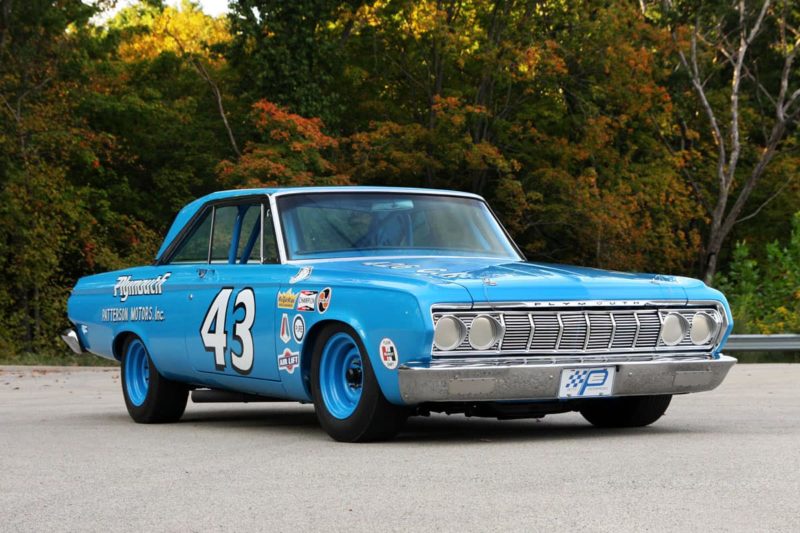
If you're looking for a unique car among vintage models yet still boasts the power of a proper American muscle car, go with the 1964 Plymouth Belvedere.
The 1964 Plymouth Belvedere was a very lightweight car with a mighty 426 Hemi engine. Needless to say, this muscle car was a real beast on the drag strip. The 1964 Belvedere also won first, second, and third place at NASCAR's 1964 Daytona race. The 426 Hemi engine was also a real beast of an engine on the street. It was able to put out a wicked 519 hp and 540 lb.-ft. torque.
The 1964 Plymouth Belvedere was meant to be a race car, and it even came with a disclaimer that said the same. What this realistically translated to was that the Belevedere had no warranty at all. Once you bought the car and drove it off the lot, that was it. Not that you would mind once you laid down that perfect set of 11s.
1968 Dodge Dart 426 Hemi
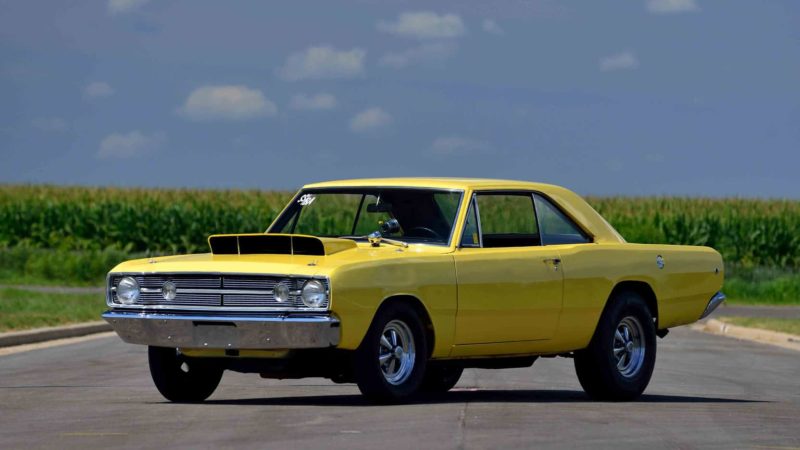
To satisfy NHRA sanction rules back in 1968, Dodge produced 50 Dart 426 Hemi cars. They featured a fiberglass hood, lightweight steel, thinner glass, and lightweight front fenders to reduce the car's weight. The 1968 Dodge Dart was meant to be a race car that wouldn't be driven on the streets.
Dodge was able to combine the very lightweight Dart with a 426 Hemi engine, one of the most powerful Chrysler engines at the time. This combination resulted in an extremely rare yet powerful muscle car. And while it might not have been legal for the streets, they were absolute beasts on the track. The 1968 Dodge Dart 426 Hemi needed only 10 seconds to hit quarter-mile runs with almost no modifications.
The 1968 Dodge Dart was one of the fastest factory-made cars from the golden age of old-school muscle cars. If you want pure hot rod power, that's what you'll get with this muscle car.
1969 Pontiac Firebird Trans Am

Pontiac's answer to the first-generation Camaro, the '69 Firebird, came with a long options list. But the top-of-the-line Firebird Trans Am really pulled out all the stops in Pontiac's attempt to gain an advantage in the muscle car race of the day.
The Trans Am bumped the Firebird's base horsepower from 175 hp up to the range of 335 hp. This was thanks to the L74 400 Ram Air III V8 that Pontiac fitted under the hood.
As far as styling, the Trans Am got some sleek upgrades, including a full-width rear spoiler, distinctive dual induction scoops on the hood, and blacked-out grills that gave this Firebird a distinctly menacing look. It also came in an optional livery, with dual stripes and a painted tail panel, particularly eye-catching in Tyrol Blue.
The Trans Am was originally a limited-production special, and only 697 were built. Of those, a mere eight were convertibles, so if you manage to catch one of these drop-tops in the wild, consider yourself lucky.
1965-1967 Shelby Cobra 427 S/C Roadster

For this iteration of the Cobra, Shelby American really pulled out all the stops. Considered by many to be one of the most iconic American sports cars in history, the big block Shelby Cobra had already secured its place in motoring history when the '65 took it up a notch.
In its competition configuration, the iconic roadster was fitted with a 7.0L Ford FE V8 engine that made a whopping 485 hp and 480 lb.-ft. of torque, propelling the Cobra from 0 to 60 mph in the realm of 4.2 seconds, an astonishing feat for the '60s.
The monstrous V8 was fitted into Carroll Shelby's Mark III Cobra chassis, which admittedly didn't have quite the same type of presence as some of the other muscle cars of its era. Not that drivers seemed to mind once they got behind the wheel of this speedster. Originally sold for around $7,500, today, an original Shelby Cobra 427 S/C, of which only 348 were made, can set you back several million dollars.
1970 Chevy El Camino SS 454 LS6

One of its generation's more unique old-school muscle cars, the 1970 El Camino, quickly grew a cult following. Part truck, part car, all muscle, the El Camino shared a platform with Chevy's other popular muscle car of the era, the Chevelle.
The El Camino Super Sport (SS) came in two models — the SS 396 and SS 454. The coveted high-performance LS6 V8, which Chevy fitted in a limited number of the '70 year model, cranked out 450 hp and 500 lb.-ft. of torque, taking the El Camino from mild-mannered utility pick-up to monster muscle truck thanks to Chevy's serious power producer under the hood.
And of course, the El Camino just had its own style — from the iconic sport stripe to the pick-up bed, this is one muscle car that will make you look twice.
Old-School Muscle Cars: The Hot Rods of Our Dreams
Whether you are lucky enough to own or be in the process of restoring a classic car or you just love looking at these icons, these 18 old-school muscle cars are some of the most iconic to grace the glory days of American muscle.
Source: https://autowise.com/old-school-muscle-cars/

0 komentar:
Posting Komentar